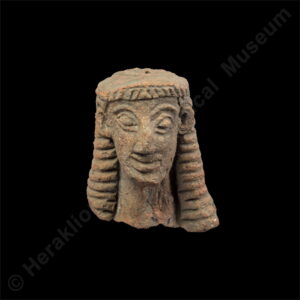
A term conventionally applied to the depiction of human figures and their features in the Orientalising Style of the Archaic period (7th c. BC). The term is derived from the craftsman Daedalus, who, according to ancient sources, was the first to make xoana, the wooden statues placed in temples and used in ancient rituals, with a sense of movement. In the Daedalic Style, the human figure is depicted frontally, with a typical wavy hairstyle (the layered wig), often bound with a ribbon at the back of the head. The oval face has strongly marked features, with almond-shaped eyes, protruding nose and square chin, and a faint smile on the lips. As in other parts of Greece, the Cretan artists of the period combine the imported elements from Egypt and the East with their own personal touches.